#Northern Elephant Seals
Explore tagged Tumblr posts
Text






























World Aquatic Animal Day
Because (most) humans do not actually live underwater, it is easy to forget the vast array and variety of aquatic animals that populate the oceans, seas, lakes, and other bodies of water on our planet!
Aquatic animals may be vertebrates or invertebrates. They may breathe air or extract oxygen through gills or the skin. And they may live in either freshwater or saltwater. But no matter what their differences are, one thing is for sure–aquatic animals deserve to be noticed and appreciated!
World Aquatic Animal Day is centered around humans taking the time to learn about and acknowledge the importance of all of these creatures who make their homes in the water.
History of World Aquatic Animal Day
Created in 2020, World Aquatic Animal Day was created by folks over at Animal Law Clinic at the Lewis & Clark Law School (Portland, Oregon, USA) who wanted to bring attention to the importance of aquatic animals to our societies and ecosystems. Widely used around the world, aquatic animals are often at risk due to the interactions humans have directly with the animals, or indirectly through the corruption of their habitats.
In addition to ‘fish’, the category of aquatic animals includes a variety of other creatures, such as mollusks, crustaceans, aquatic birds, starfish, corals, aquatic insects, amphibians, marine mammals, reptiles, and more.
The idea for World Aquatic Animal Day is to raise global awareness so that humans all over the world would band together to create policies, laws, education, and outreach that will help to protect these valuable animals. The hope is to elevate the status of these creatures so that people are more likely to take an active role in learning about and acting on behalf of them. Different ideas for protecting these animals continue to be featured, from plastic pollution to climate change issues.
Many organizations throughout the world participated in the first World Aquatic Animal Day in 2020, including Canada, Chile, Australia, South Africa, Kazakhstan, Kenya, Zimbabwe, Croatia, Norway, Russia, Switzerland, the United Kingdom and more.
The hope is that many more will join in for future days in the coming years. The more people who get involved, the better!
How to Celebrate World Aquatic Animal Day
Celebrating the animals under the sea is the idea of World Aquatic Animal Day, and there are tons of ways to do it!
Watch a Documentary about Sea Life
Getting educated about aquatic animals doesn’t have to be boring. Learning from film crews that have been deep-sea diving can be a thrilling way to see, enjoy and appreciate the myriad of animals that live in the water.
Try out these documentaries:
The Blue Planet (2001). First airing on the BBC, this riveting series of shows gives a glimpse into life in the ocean. It was filmed in more than 200 different locations over a five year time period. And Sir David Attenborough’s voice over simply makes the ocean seem that much more compelling.
Turtle: The Incredible Journey (2009). This film uniquely follows the life of one sea turtle beating the odds, from when she was hatched to facing the natural and unnatural threats that occur in the life of such a creature.
Mission Blue (2014). Featuring the life and work of Dr. Sylvia Earl, a marine biologist and oceanographer, this documentary shows her life as it is dedicated to the study of the ocean, having spent thousands of hours of time in its depths.
Life in the Blue (2016). Showcasing the extraordinary variety and range of life that exists in the expanses of the ocean, this documentary specifically targets what takes place just under the surface in a small band of 10 meter deep water. Whether looking for shelter or hunting and foraging for food, aquatic animals participate in a host of activities in this rather small space.
Host an Under the Sea Party
Get family and friends involved in raising awareness of the needs of aquatic animals by inviting them over for a party that dives deep into the theme. Make the place festive with sea-worthy decorations and play tunes from a water-themed playlist (see below).
Serve snacks and desserts that stick with the theme of honoring aquatic animals, including cupcakes adorned with gummy fish, goldfish cheese or graham crackers, cookies baked starfish shapes or a veggie tray organized in the shape of a rainbow fish.
Fruit treats are fabulous for sea-themed parties! Oranges can be easily fashioned to create the look of an octopus by partially peeling eight strips and then leaving them sticking out from the bottom. (Draw on eyes with a non-toxic marker.) Apples can be creatively sliced to appear as crabs, while banana halves can be adorned with an eye and the stem cut to look like dolphins. And a watermelon can be creatively carved to channel the look of a sea turtle!
Raise Awareness for Aquatic Animal Day
Get others involved in the issues facing these creatures by holding events at work, school, clubs or other places where the community gathers. Make posters, host lecturers, or create a family-friendly charity event where the money is raised to donated to underwater wildlife funds. Don’t forget to use your voice to let government representatives know about the need to protect these creatures by writing letters to ask them for better rules, regulations, and laws.
Put Together an Aquatic Animals Playlist
Getting into the groove of music is a great way to bring sea creatures to the forefront of the mind–whether alone or at a party! Gather some eclectic songs together in a playlist on Spotify or another music hosting venue and jam in honor of the aquatic animals.
Try some favorite songs such as these, or come up with other creative ideas:
Too Many Fish in the Sea (1983) by The Marvelettes
Under the Sea (1989) Soundtrack from The Little Mermaid
Dead Sea (2012) by The Lumineers
Sea of Love (1959) by Phil Phillips
Across the Sea (1996) by Weezer
Only the Ocean (2010) by Jack Johnson
Deep Ocean Vast Sea (1989) by Peter Murphy
Sittin’ on the Dock of the Bay (1968) by Otis Redding
Source
#World Aquatic Animal Day#WorldAquaticAnimalDay#3 April#American Alligator#Everglades National Park#original photography#wildlife#flora#fauna#travel#USA#Canada#beaver#harbor seal#Giant green anemone#Sea Otter#Northern Elephant Seals#California sea lions#San Diego Zoo#polar bear#crocodile#Bronx Zoo#Indian Gharial#tourist attraction#summer vacation#vacation#Viveiro#Spain#Vancouver#most of them are wildlife
6 notes
·
View notes
Text
Today's Seal Is: Ouroboros
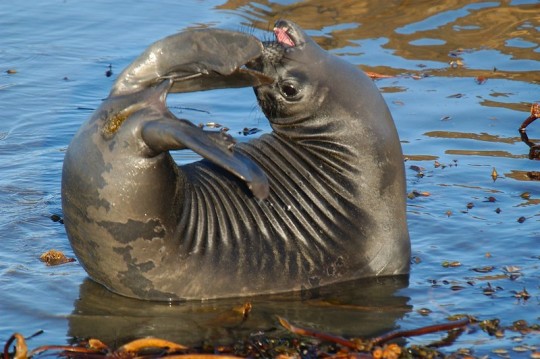
6K notes
·
View notes
Text
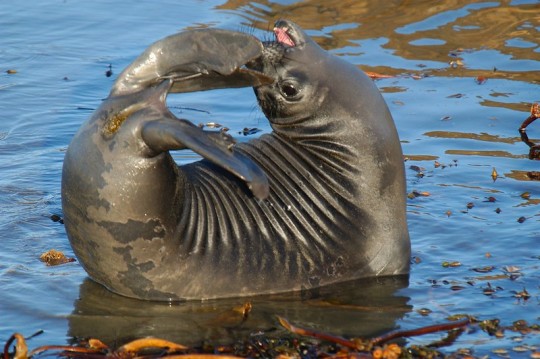
A Northern elephant seal pup (Mirounga angustirostris) in Monterey Bay National Marine Park, California
by NOAA
#northern elephant seal#seals#pinnipeds#marine mammals#mirounga angustirostris#mirounga#phocidae#pinnipedia#carnivora#mammalia#chordata#wildlife: california#wildlife: usa#wildlife: north america
695 notes
·
View notes
Text
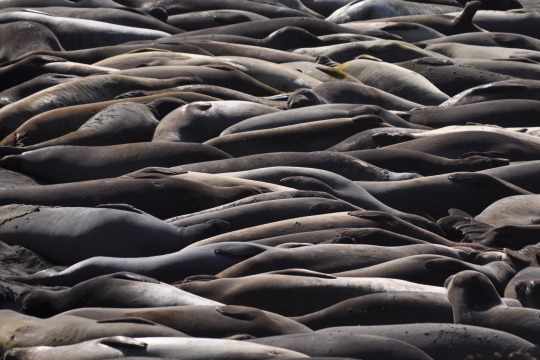
Elephant seal
“Elephant Seals basking in the sun at Piedras Blancas, just off of Highway 1 in California.” - via Wikimedia Commons
#Mirounga angustirostris#wikipedia#wikipedia pictures#wikimedia commons#nature#animals#elephant seal#northern elephant seal#california#california coast#pacific coast#highway 1#piedras blancas#chordata#animalia#chordates#mammal#mammalia#carnivora#carnivores#pinniped#pinnipedia#seal#seals#marine mammals#Earless seal#Phocidae#crawling seals#Mirounga#oceancore
83 notes
·
View notes
Text
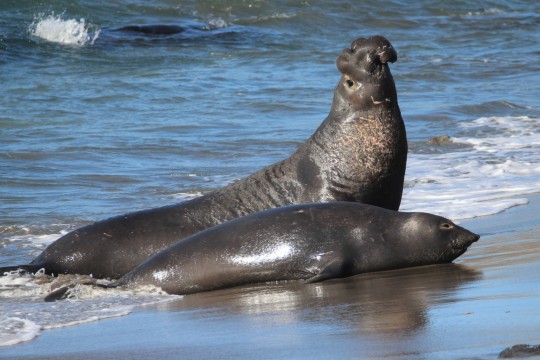
By patpatasaur, CC-BY-NC
#northern elephant seal#elephant seal#seal#pinniped#mammal#wet [critter creature or beast] wednesday#wednesday poll
66 notes
·
View notes
Text
Uncharismatic Fact of the Day
Marine mammals have to hold their breath underwater, but some species like the northern elephant seal have to hold it on land too! To conserve heat and energy while they bask, molt, and nurse pups while, northern elephant seals will go through phases of 'apnoea', wherein they cease breathing for 8-10 minutes, followed by periods of breathing for about 5 minutes. On average, they only breathe about 9-10 times per minute while hauled out on the beach.

(Image: A male northern elephant seal (Mirounga angustirostris) by NOAA Fisheries)
If you like what I do, consider buying me a ko-fi!
#northern elephant seal#Carnivora#Phocidae#true seals#seals#pinnipeds#carnivores#mammals#uncharismatic facts
271 notes
·
View notes
Note
Begging you for some pinnipeds any pinnipeds please
Piebald Northern fur seal
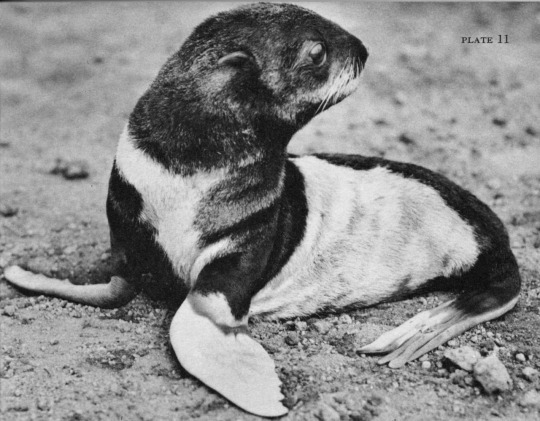
Atypical colored Antarctic fur seal! With the orange, white, and grey they look calico.
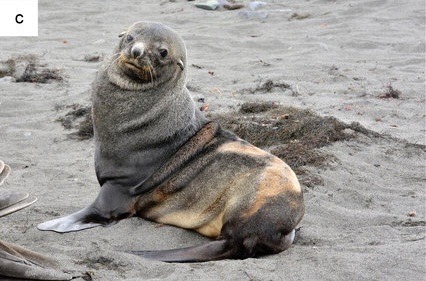
Leucistic Antarctic fur seal

Interesting gang of Antarctic fur seal, one is leucistic and one almost looks brindle?
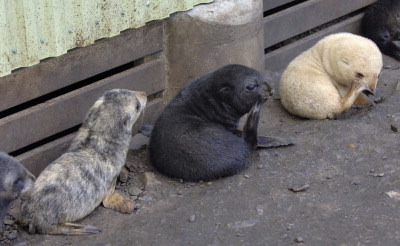
Leucistic southern elephant seal

Northern fur seal labeled as albino and partial albino (leucistic?) by some sources. NOAA says albino and they are experts.
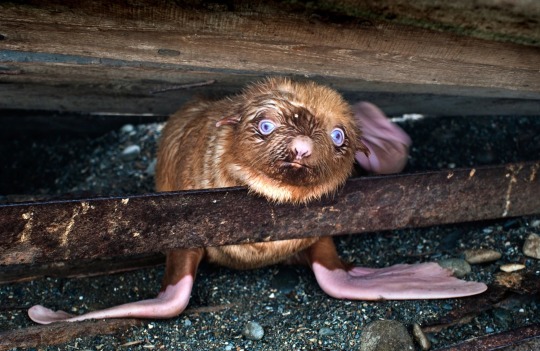
Albino harbor seal
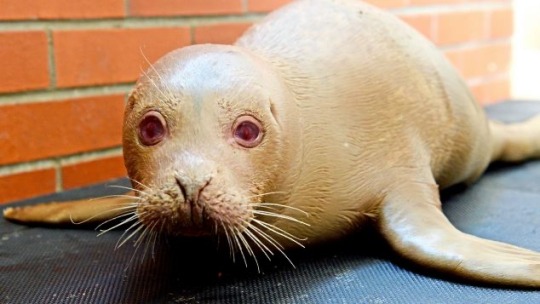
Albino ringed seal
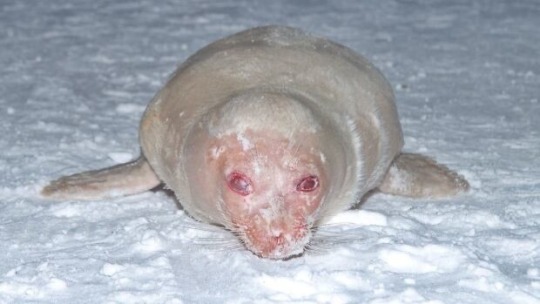
Melanistic grey seal
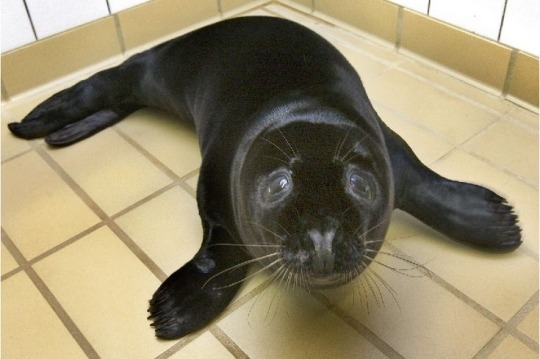
#color mutation#albino#albanisim#melanistic#melanism#piebald#leucism#leucistic#oddball#northern fur seal#Callorhinus ursinus#antarctic fur seal#Arctocephalus gazella#harbor seal#Phoca vitulina#ringed seal#Pusa hispida#southern elephant seal#Mirounga leonina#grey seal#Halichoerus grypus#ask
739 notes
·
View notes
Text
Sands by the Sea 🌊🐘
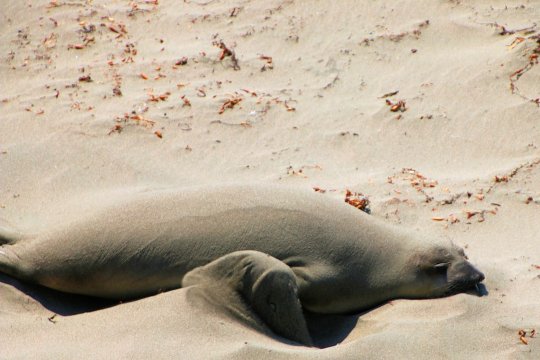
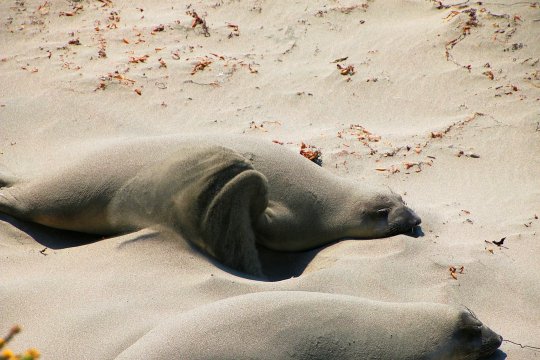
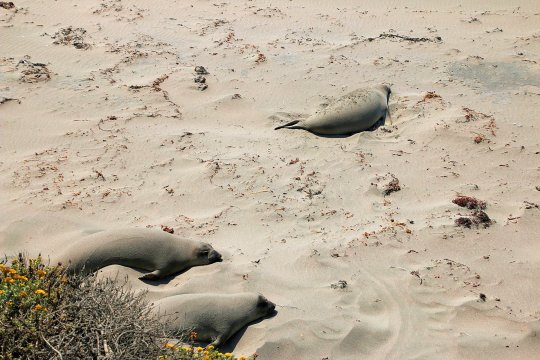
#Northern Elephant Seal#Beach#Ocean#Sand#Seals#Wildlife#Waves#Coastline#Mirounga#Elephant Seal#Sea Elephants#Cute Animals#Pacific Ocean#Central Coast#Rocky Beach#Seaside Woolly Sunflower#Piedras Blancas#San Simeon#San Luis Obispo#California
80 notes
·
View notes
Text
Phylogenetic seal tournament
Family: Phocidae - earless seals
Subfamily: Monachinae - southern seals
Genus: Mirounga - FINAL
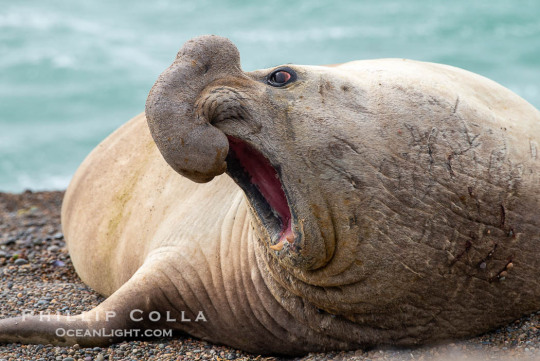
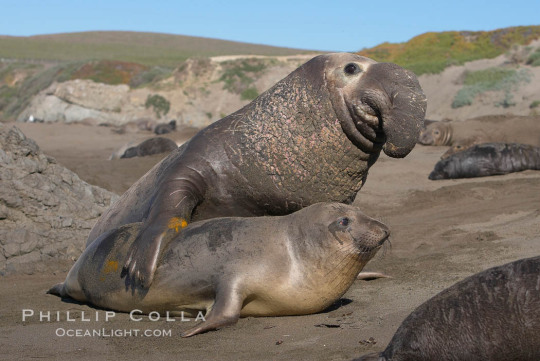
The biggest pinniped species with even the females of the smaller northern elephant seal measuring 2.5 to 3.6 m (8.2 to 11.8 ft) of length, and southern elephant seal bulls typically reaching a length of 5 m (16 ft) and a weight of 3,000 kg (7,000 lb).
And my favourite wikipedia entry for them:

image source: 1, 2; audio: 1, 2
tournament masterpost
#polls#tournament poll#phylogenetic seal tournament#southern elephant seal#northern elephant seal#phocidae#elephant seal#hogy lehet egy állat ennyire rusnya
11 notes
·
View notes
Text
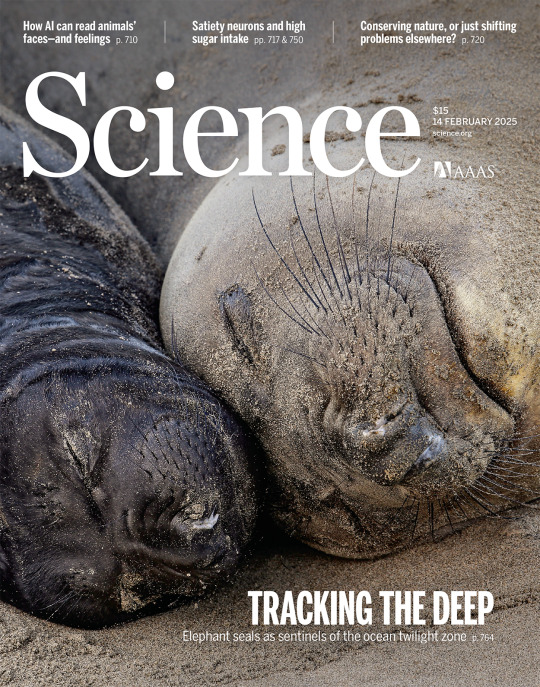
A mother elephant seal rests with her pup after returning from a 7-month, 10,000-kilometer foraging trip to the northeast Pacific Ocean, where she made ~75,000 attempts to feed on twilight zone fish. Seals’ foraging success across decades reveals variation in fish abundance, which drives large fluctuations in the survival and reproductive success of their offspring. See page 764. Photo: Bruce Lyon, under National Marine Fisheries Service (NMFS) research permit no. 23188
Look at that covergirl!!!!
22 notes
·
View notes
Text
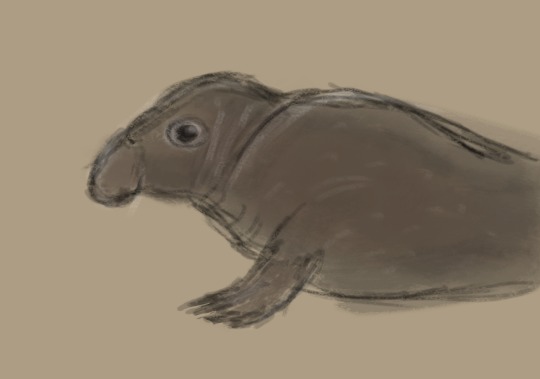
doodle of a northern elephant seal from a book im readin'
4 notes
·
View notes
Text
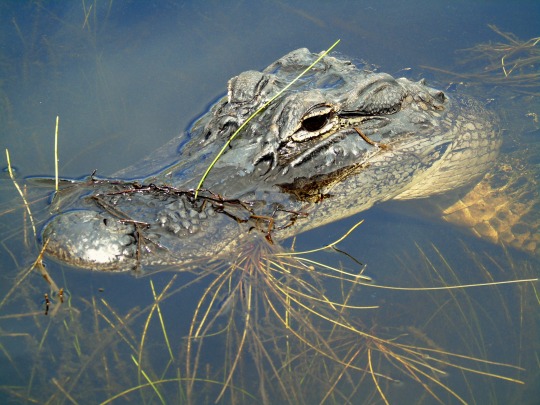


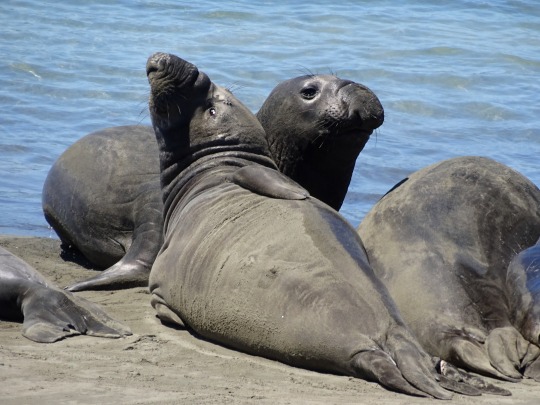


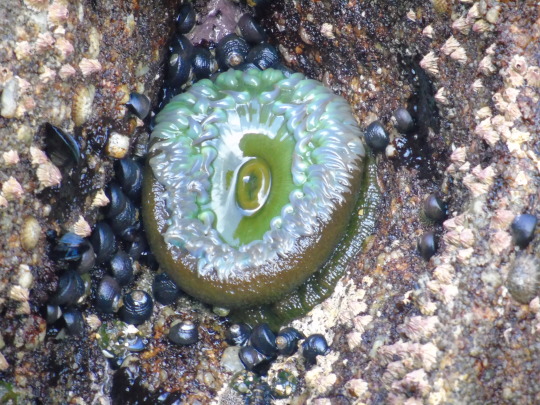
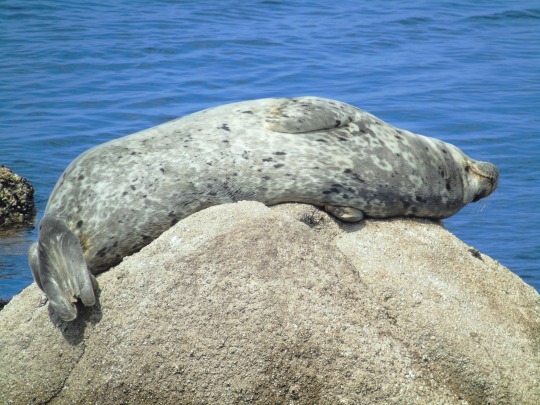
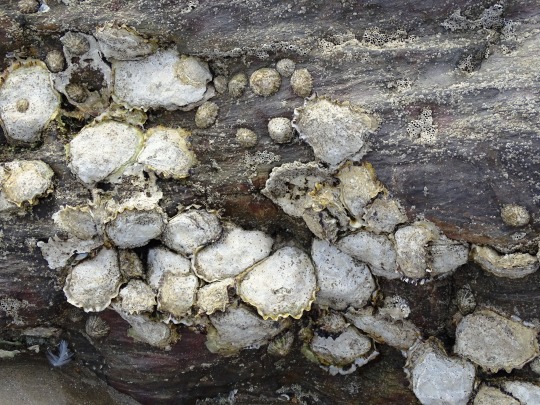
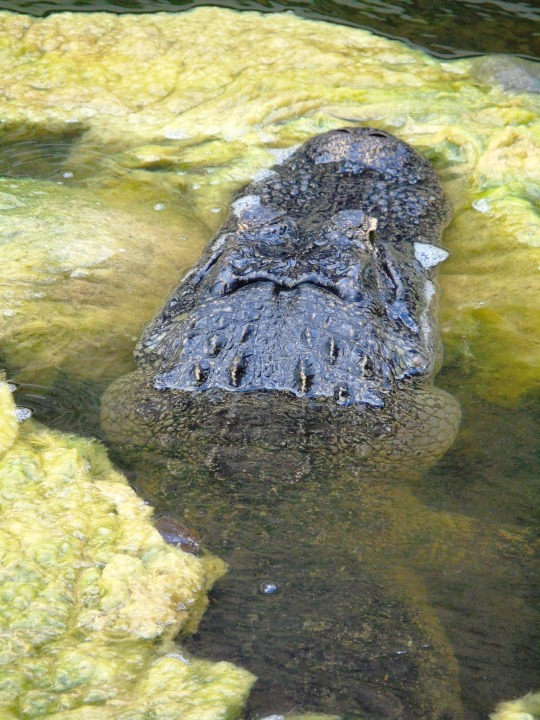

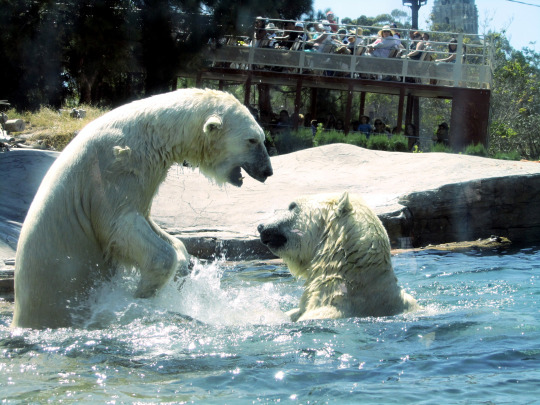
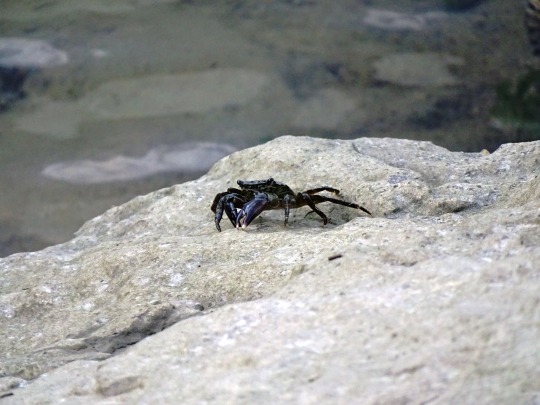
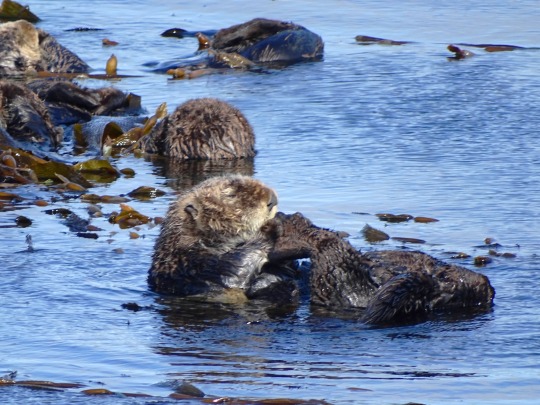


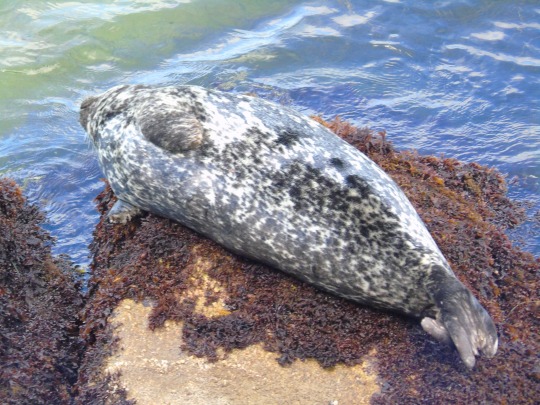
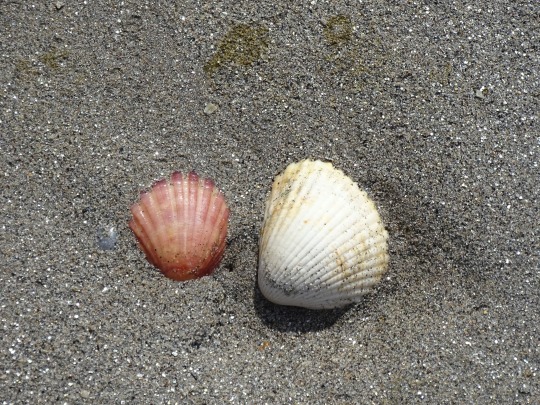

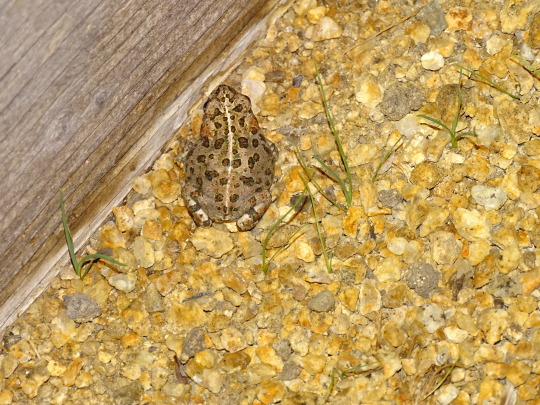
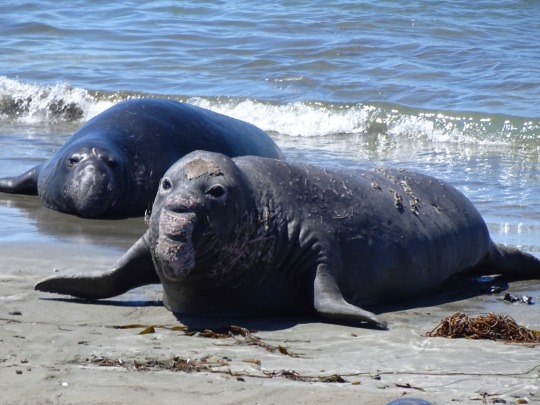
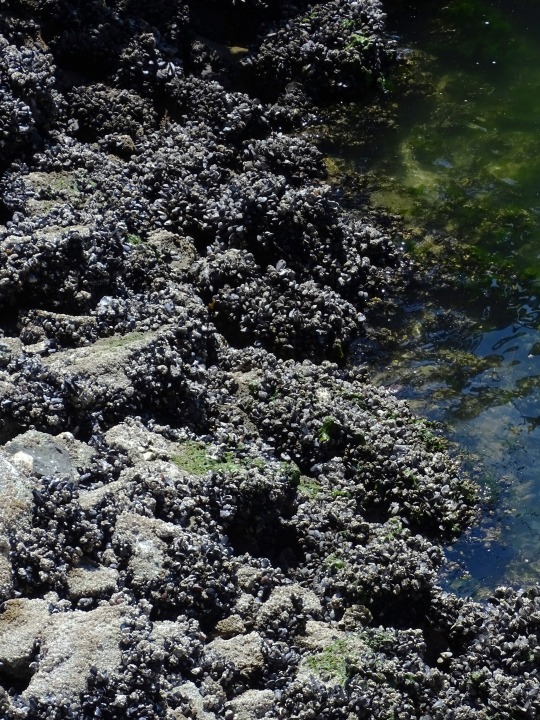
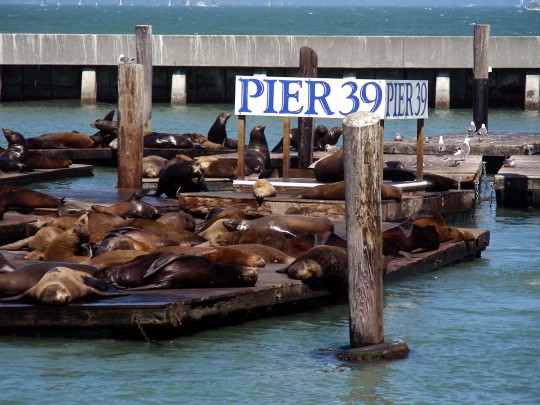

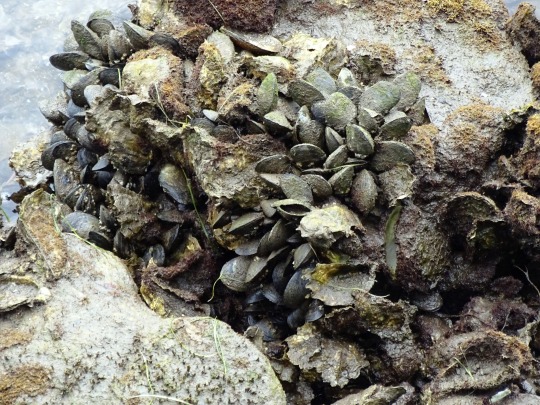
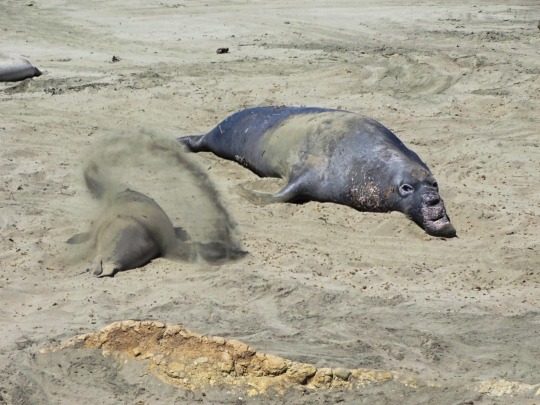
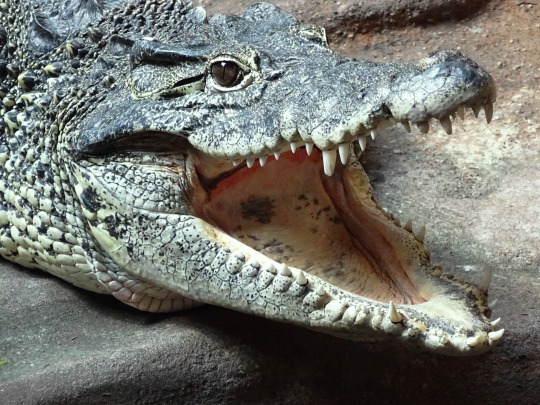

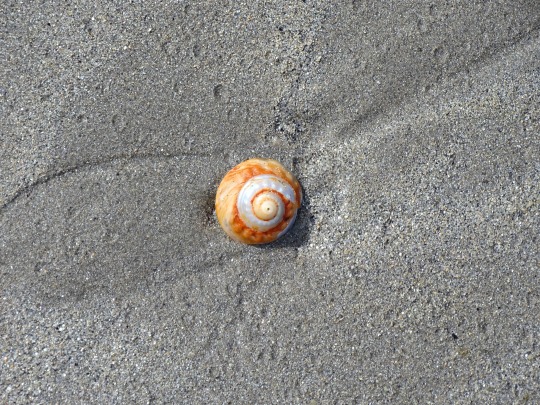
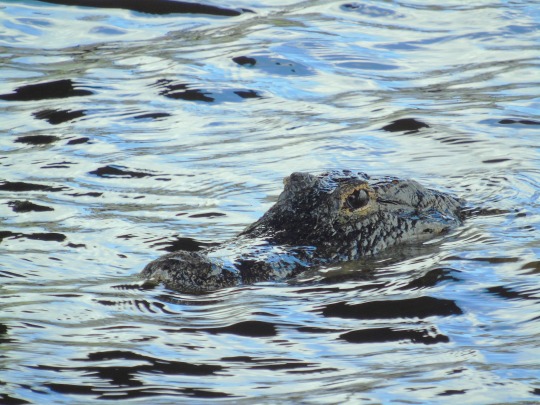
World Aquatic Animal Day
Because (most) humans do not actually live underwater, it is easy to forget the vast array and variety of aquatic animals that populate the oceans, seas, lakes, and other bodies of water on our planet!
Aquatic animals may be vertebrates or invertebrates. They may breathe air or extract oxygen through gills or the skin. And they may live in either freshwater or saltwater. But no matter what their differences are, one thing is for sure–aquatic animals deserve to be noticed and appreciated!
World Aquatic Animal Day is centered around humans taking the time to learn about and acknowledge the importance of all of these creatures who make their homes in the water.
History of World Aquatic Animal Day
Created in 2020, World Aquatic Animal Day was created by folks over at Animal Law Clinic at the Lewis & Clark Law School (Portland, Oregon, USA) who wanted to bring attention to the importance of aquatic animals to our societies and ecosystems. Widely used around the world, aquatic animals are often at risk due to the interactions humans have directly with the animals, or indirectly through the corruption of their habitats.
In addition to ‘fish’, the category of aquatic animals includes a variety of other creatures, such as mollusks, crustaceans, aquatic birds, starfish, corals, aquatic insects, amphibians, marine mammals, reptiles, and more.
The idea for World Aquatic Animal Day is to raise global awareness so that humans all over the world would band together to create policies, laws, education, and outreach that will help to protect these valuable animals. The hope is to elevate the status of these creatures so that people are more likely to take an active role in learning about and acting on behalf of them. Different ideas for protecting these animals continue to be featured, from plastic pollution to climate change issues.
Many organizations throughout the world participated in the first World Aquatic Animal Day in 2020, including Canada, Chile, Australia, South Africa, Kazakhstan, Kenya, Zimbabwe, Croatia, Norway, Russia, Switzerland, the United Kingdom and more.
The hope is that many more will join in for future days in the coming years. The more people who get involved, the better!
How to Celebrate World Aquatic Animal Day
Celebrating the animals under the sea is the idea of World Aquatic Animal Day, and there are tons of ways to do it!
Watch a Documentary about Sea Life
Getting educated about aquatic animals doesn’t have to be boring. Learning from film crews that have been deep-sea diving can be a thrilling way to see, enjoy and appreciate the myriad of animals that live in the water.
Try out these documentaries:
The Blue Planet (2001). First airing on the BBC, this riveting series of shows gives a glimpse into life in the ocean. It was filmed in more than 200 different locations over a five year time period. And Sir David Attenborough’s voice over simply makes the ocean seem that much more compelling.
Turtle: The Incredible Journey (2009). This film uniquely follows the life of one sea turtle beating the odds, from when she was hatched to facing the natural and unnatural threats that occur in the life of such a creature.
Mission Blue (2014). Featuring the life and work of Dr. Sylvia Earl, a marine biologist and oceanographer, this documentary shows her life as it is dedicated to the study of the ocean, having spent thousands of hours of time in its depths.
Life in the Blue (2016). Showcasing the extraordinary variety and range of life that exists in the expanses of the ocean, this documentary specifically targets what takes place just under the surface in a small band of 10 meter deep water. Whether looking for shelter or hunting and foraging for food, aquatic animals participate in a host of activities in this rather small space.
Host an Under the Sea Party
Get family and friends involved in raising awareness of the needs of aquatic animals by inviting them over for a party that dives deep into the theme. Make the place festive with sea-worthy decorations and play tunes from a water-themed playlist (see below).
Serve snacks and desserts that stick with the theme of honoring aquatic animals, including cupcakes adorned with gummy fish, goldfish cheese or graham crackers, cookies baked starfish shapes or a veggie tray organized in the shape of a rainbow fish.
Fruit treats are fabulous for sea-themed parties! Oranges can be easily fashioned to create the look of an octopus by partially peeling eight strips and then leaving them sticking out from the bottom. (Draw on eyes with a non-toxic marker.) Apples can be creatively sliced to appear as crabs, while banana halves can be adorned with an eye and the stem cut to look like dolphins. And a watermelon can be creatively carved to channel the look of a sea turtle!
Raise Awareness for Aquatic Animal Day
Get others involved in the issues facing these creatures by holding events at work, school, clubs or other places where the community gathers. Make posters, host lecturers, or create a family-friendly charity event where the money is raised to donated to underwater wildlife funds. Don’t forget to use your voice to let government representatives know about the need to protect these creatures by writing letters to ask them for better rules, regulations, and laws.
Put Together an Aquatic Animals Playlist
Getting into the groove of music is a great way to bring sea creatures to the forefront of the mind–whether alone or at a party! Gather some eclectic songs together in a playlist on Spotify or another music hosting venue and jam in honor of the aquatic animals.
Try some favorite songs such as these, or come up with other creative ideas:
Too Many Fish in the Sea (1983) by The Marvelettes
Under the Sea (1989) Soundtrack from The Little Mermaid
Dead Sea (2012) by The Lumineers
Sea of Love (1959) by Phil Phillips
Across the Sea (1996) by Weezer
Only the Ocean (2010) by Jack Johnson
Deep Ocean Vast Sea (1989) by Peter Murphy
Sittin’ on the Dock of the Bay (1968) by Otis Redding
Source
#World Aquatic Animal Day#WorldAquaticAnimalDay#3 April#American Alligator#Everglades National Park#original photography#wildlife#flora#fauna#travel#USA#Canada#beaver#harbor seal#Giant green anemone#Sea Otter#Northern Elephant Seals#California sea lions#San Diego Zoo#polar bear#crocodile#Bronx Zoo#Indian Gharial#tourist attraction#summer vacation#vacation#Viveiro#Spain#Vancouver#most of them are wildlife
0 notes
Text
Today's Seal Is: Homunculus Loxodontus

555 notes
·
View notes
Text
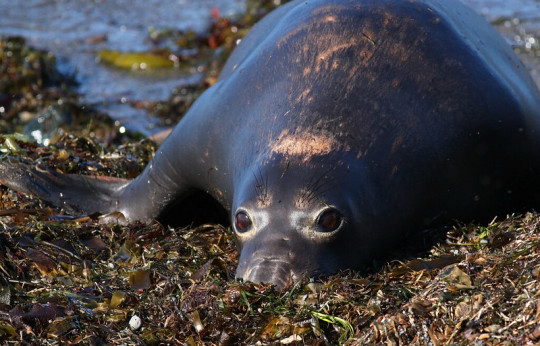
A Northern elephant seal (Mirounga angustirostris) coming ashore in San Simeon, California, USA
by Robyn Waayers
#northern elephant seal#seals#pinnipeds#mirounga angustirostris#mirounga#phocidae#pinnipedia#carnivora#mammalia#chordata#wildlife: california#wildlife: usa#wildlife: north america
1K notes
·
View notes
Text
While they may not look alike, did you know that seals are thought to be most closely related to bears, weasels, and otters? 🦭
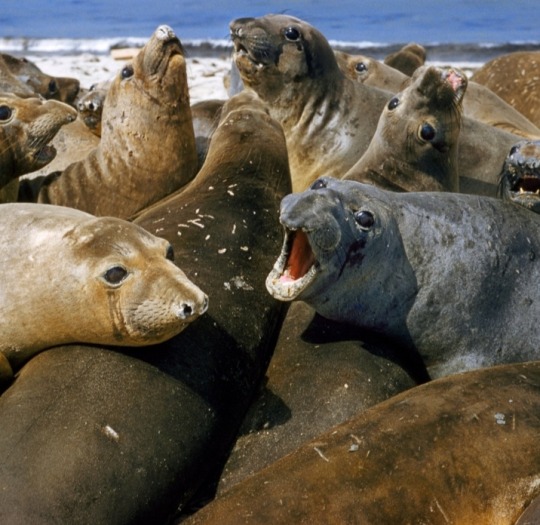
📸 1/4: Barking elephant seals, Mirounga angustirostris, bask in a huge pile on a beach.
(National Geographic Image Collection / Bates Littlehales)
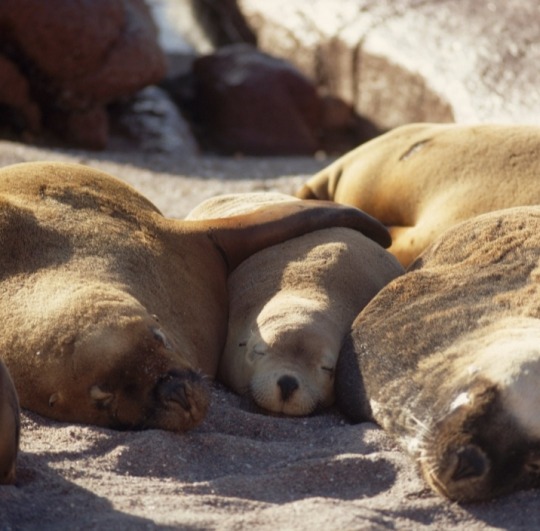
📸 2/4: Seals sleep in a tight group on the beach.
(National Geographic Image Collection / Joseph J. Scherschel)

📸 3/4: A colony of Steller's sea lions (Eumetopias jubata, also called northern sea lions) on a rocky islet in Hecate Strait.
(National Geographic Image Collection / Sam Abell)

📸 4/4: California sea lions, Zalophus californianus, lounge on a rock in British Columbia's Great Bear Rainforest.
(National Geographic Image Collection / Anne Farrar)
#seals#elephant seals#Mirounga angustirostris#sea lions#Stellar's sea lions#northern sea lions#Eumetopias jubata#California sea lions#Zalophus californianus#National Geographic#animals#marine mammals#pinnipeds#fin-footed
44 notes
·
View notes
Text
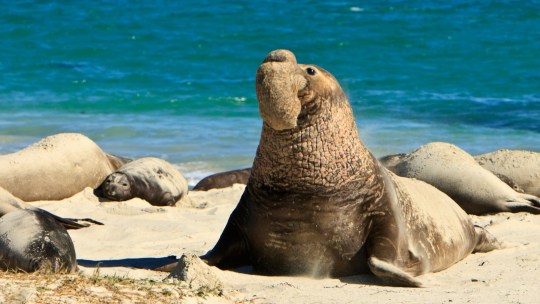
Northern Elephant Seal (Mirounga angustirostris)
Habitat & Distribution
Spend most of their time in the open ocean close to the coast
Come to shore along the eastern Pacific coast and offshore islands once a year to pup
Physical Description
Weight: 1,500–2,300 kg (3,300–5,100 lb) for males, 400 to 900 kg (880 to 1,980 lb) for females
Length: 4–5 m (13–16 ft) for males, 2.5 to 3.6 m (8.2 to 11.8 ft) for females
Northern elephant seals are bulky, with flat front flippers and atrophied hind limbs; males sport a large proboscis nose
They are covered in a sleek layer of brown fur, which only extends up to the neck on males
Behaviour
The bulk of the diet is fish, supplemented with squid, crustaceans, small sharks, and rays
When hunting, northern elephant seals are generally solitary
Upon return to shore, males battle fiercely for territory and maintain a harem of 30-100 females
In the ocean, northen elephant seals are hunted by killer whales and great white sharks
Key Advantages
Northern elephant seals are strong swimmers, able to dive up to 1,550 m (5,090 ft) and able to remain submerged for 20-60 minutes
The immense bulk of male elephant seals can easily crush smaller animals, including other elephant seals
Males are equipped with long, thick teeth which they use to bite other males
Photo by Tim Hauf
54 notes
·
View notes